Blog

Game of Drones: A Tale of Palace Intrigue at Phipps’ Observational Beehive
To the unsuspecting eye, a quick glance at the observational beehive in the Nature Lab at Phipps may look uncomplicated. Bees leave, bees gather nectar and pollen, bees come back, bees make honey – end of story. However, Integrated Pest Management Specialist Dr. Ryan Gott reveals there is much more happening than meets the eye. The world of bees is a complicated one, filled with nuanced systems of communication, struggles of power and the incredible influence of the reigning monarch — the queen bee.
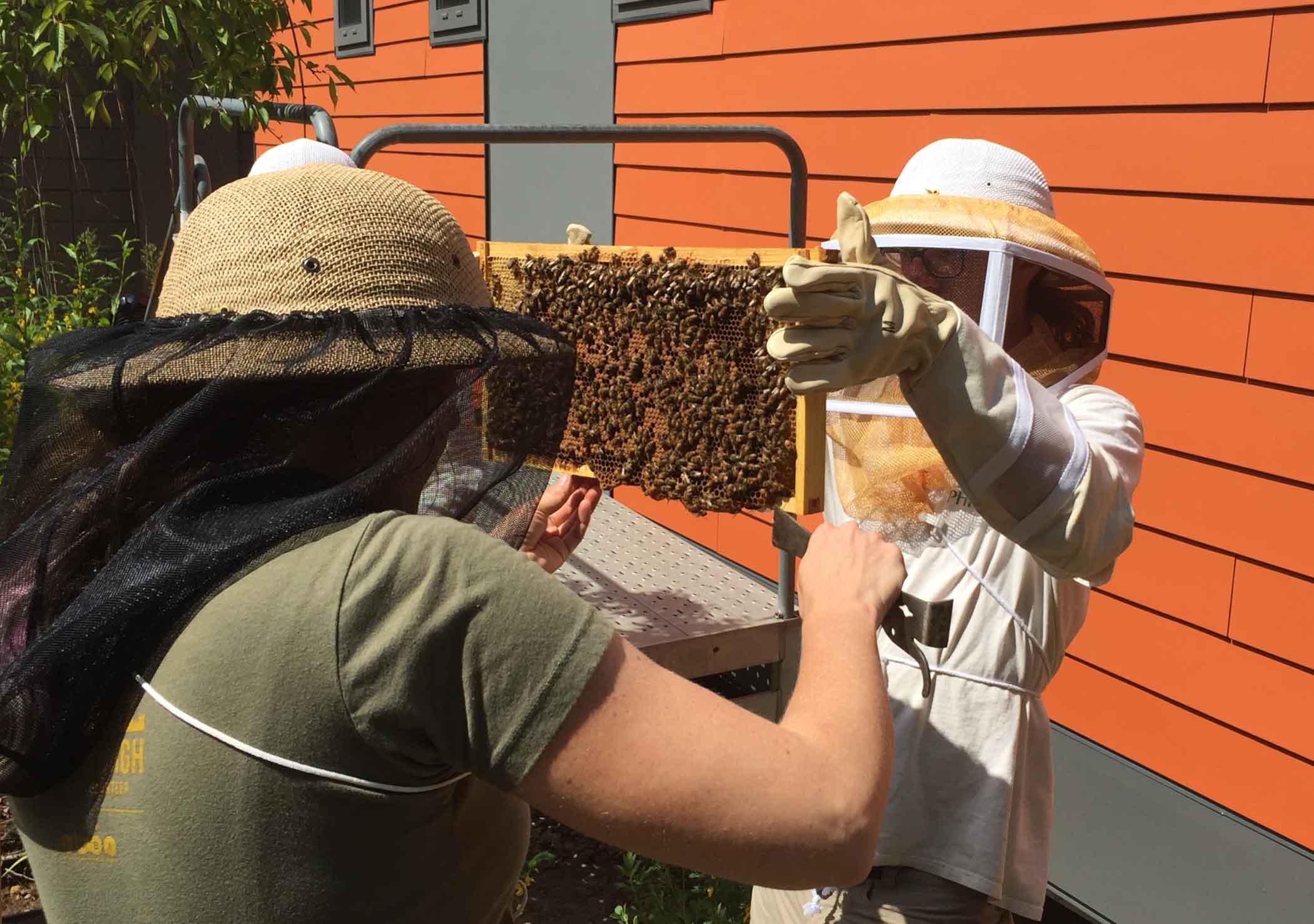
It was almost a year ago that we installed the observation beehive, and the installation went well. Christina Neumann of Apoidea Apiary brought a healthy, thriving queen along with a group of worker bees to our empty hive. Throughout the remainder of summer and fall, the hive was doing well. The queen continued to lay eggs while her workers pollinated our sustainable landscape and even over winter, a perilous time for bees, the hive continued to thrive.
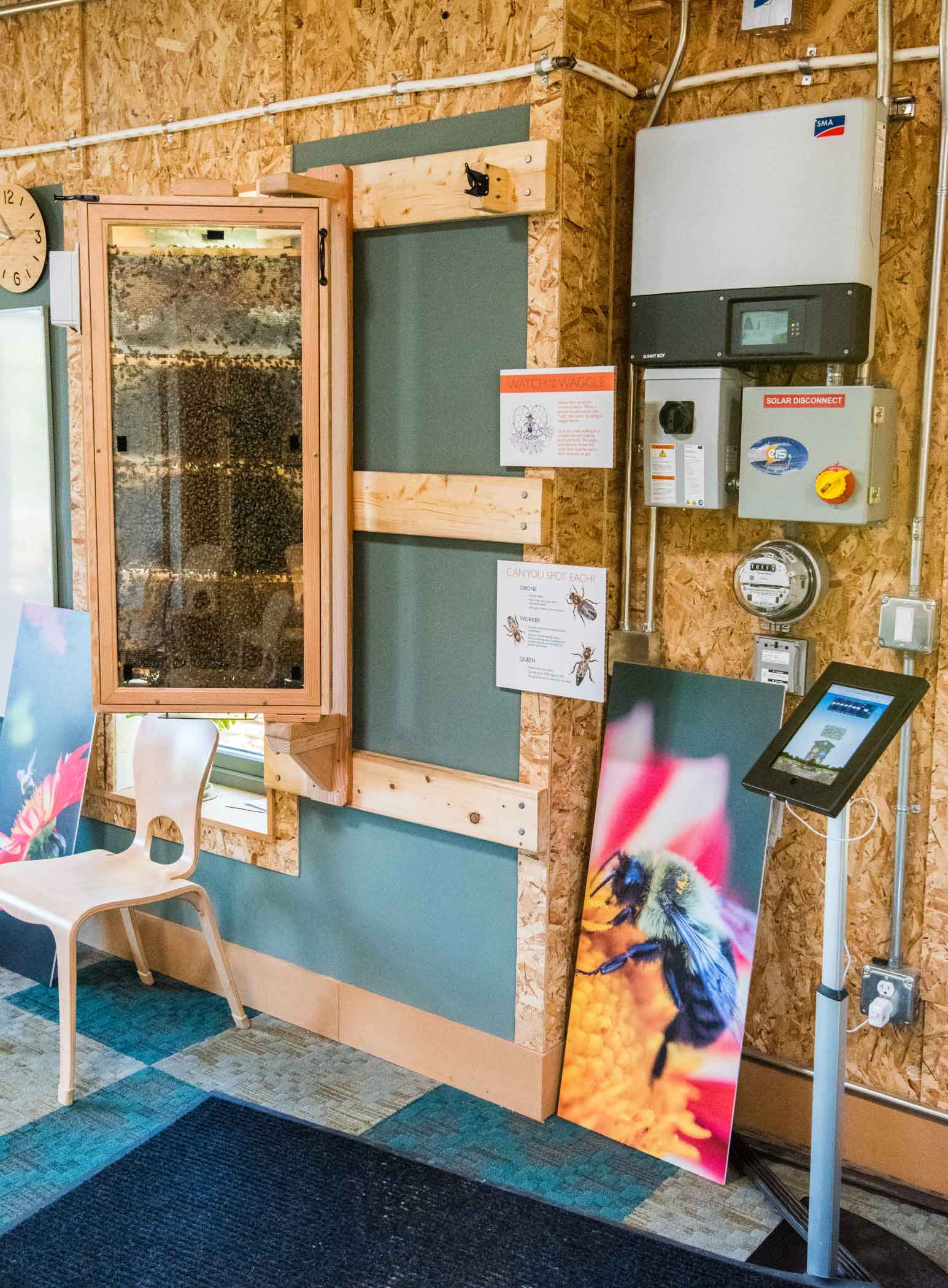
Then, this spring, we decided to move the bees outside to a hive right behind the Nature Lab. The cube shape of the outdoor hive is more natural for bees and would allow our colony to continue to grow and prosper while maintaining a smaller colony in the observation hive for our guests to see up close.
This is a more complicated process than it may seem because a hive needs a queen in order to continue reproducing. Worker bees can lay eggs, but all of the eggs they produce are drones (males). The queen is the only bee who has the reproductive organs to produce both male and female eggs, and she can choose how many eggs are workers (females) or drones (males). The typical worker bee only lives for about a month at the most, so without a queen, the hive population would dissipate after a few weeks. The entire future and well-being of the hive hinges on the singularly impactful queen bee.
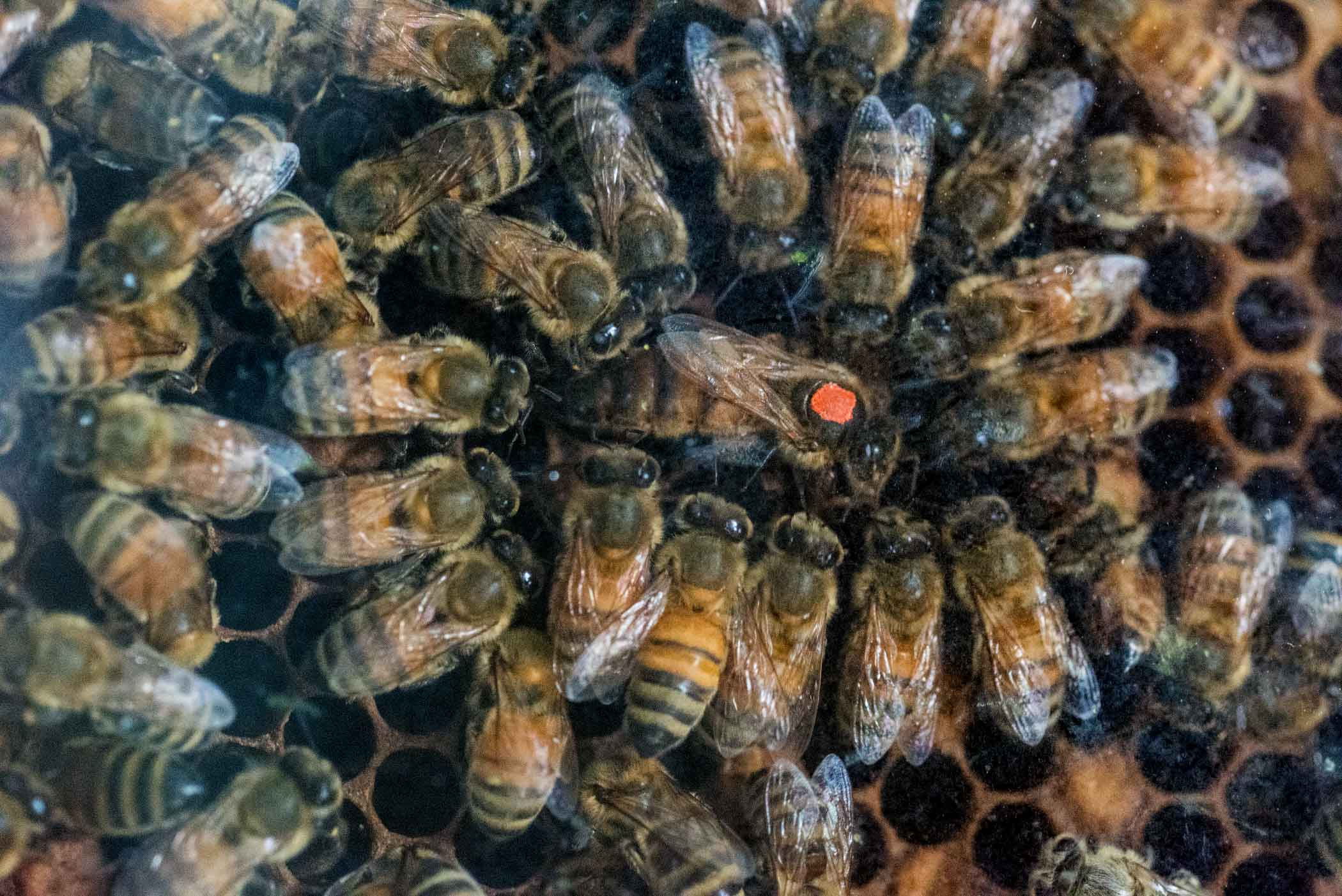
In the wild, when a queen wants to start a new colony, her worker bees prepare for the move months in advance. Knowing they will need a new monarch, the worker bees build “queen cups,” or cells in the hive that are shaped like a cup where queen eggs can develop. The reigning queen lays eggs in these cups, and workers nurture the eggs, bringing them royal jelly, which has the nutrients the queen needs to fully develop the reproductive organs that allow her to lay both male and female eggs. After the cells are expanded and capped, allowing the larvae to pupate, the queen gathers a group of workers and leaves the hive. Eventually, a new queen will emerge from a capped queen cell and hive life will continue on as usual.
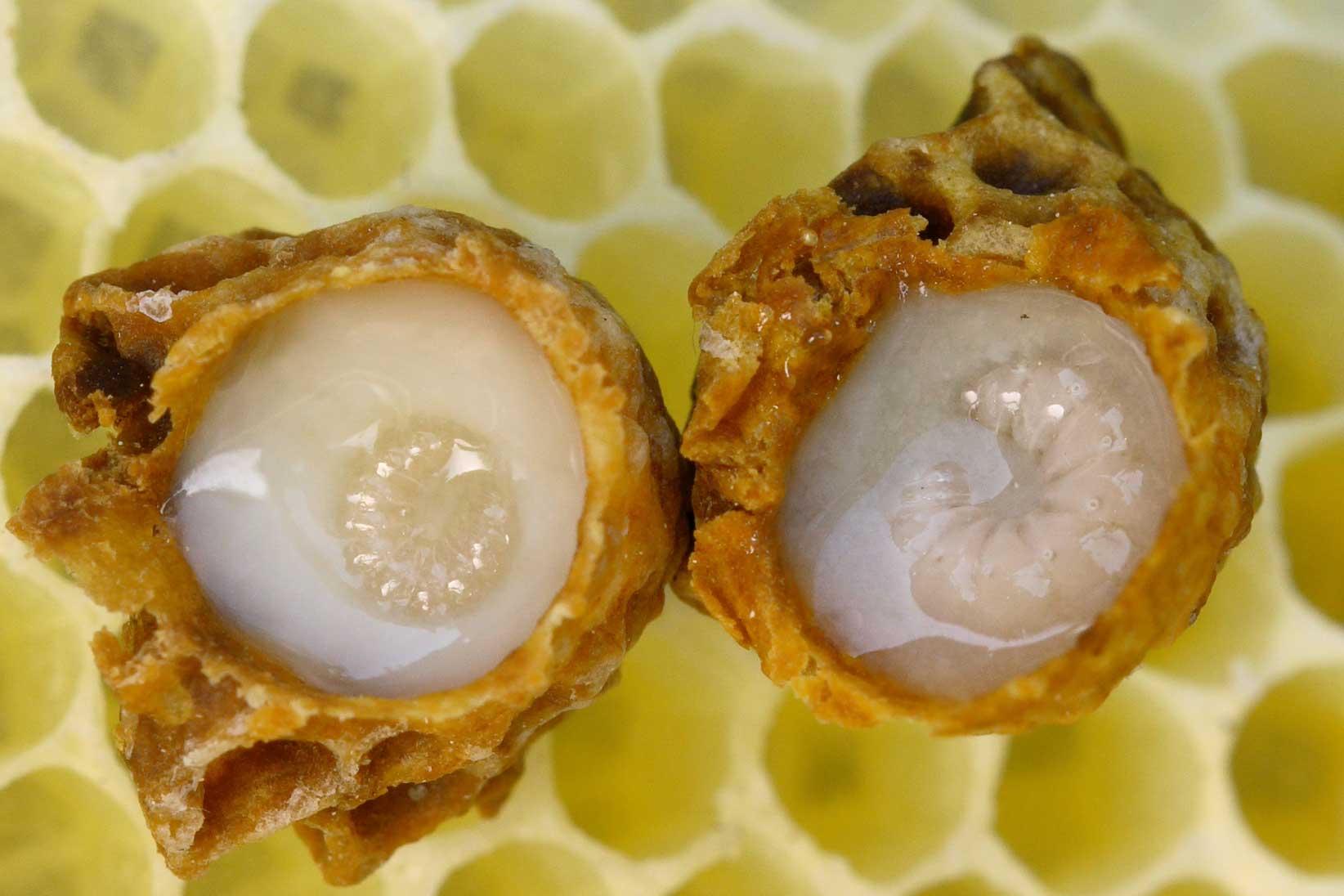
Beekeepers who want to expand their colonies simulate swarms all the time, taking the queen and a group of workers to a new space and allowing the previous hives to develop new queens. We followed the same process to make our bees think they were swarming so that the queen could be moved outside and a new queen could form in the observation hive.
At first, all seemed to go according to plan. The first queen was outside, laying eggs as usual, and the workers in the observation hive were rearing larvae in the queen cells. Eventually, this new queen emerged in the observation hive. Phipps staff was excited — we had successfully started a new colony outside while maintaining the indoor colony.
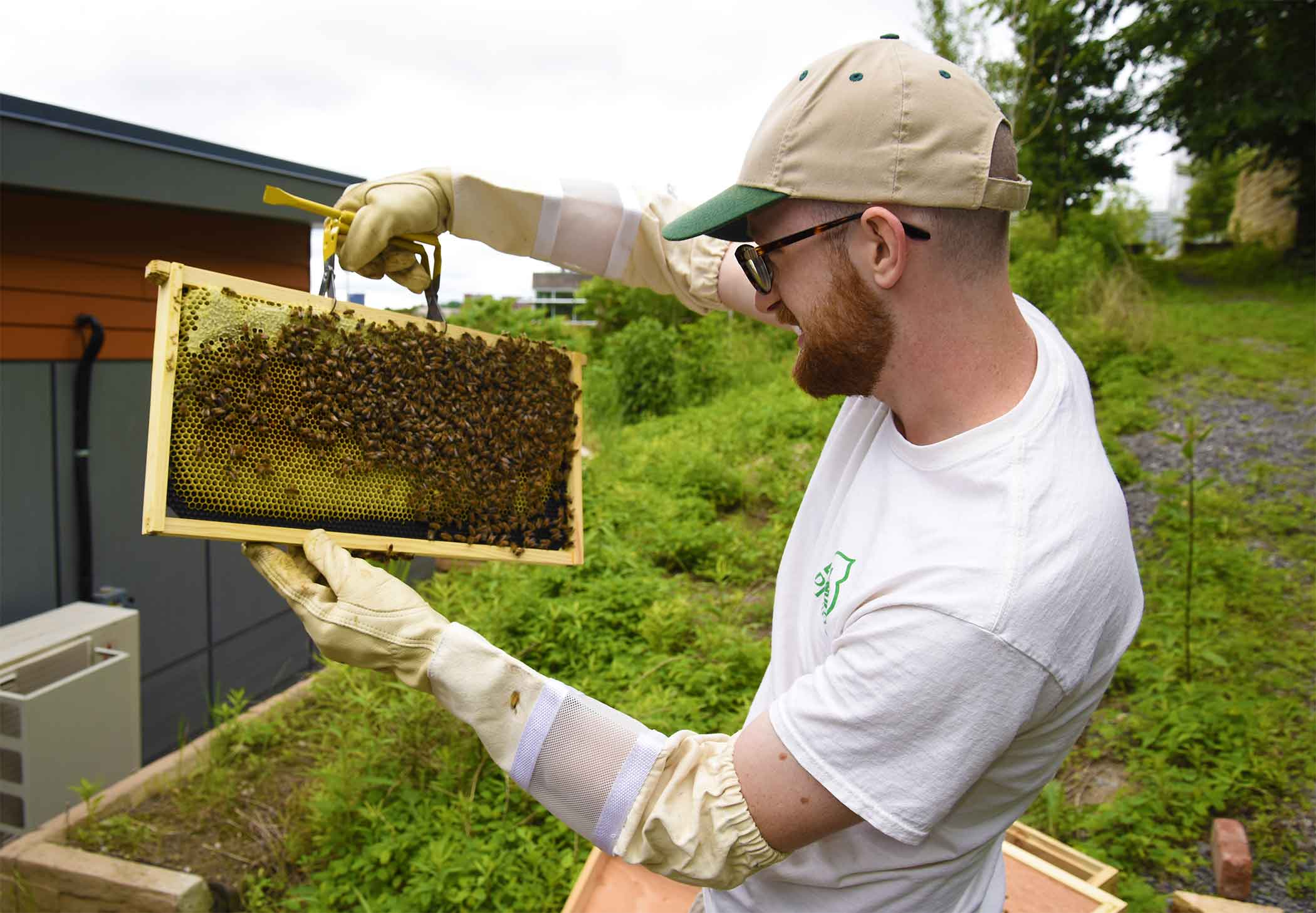
Then one day, the new queen left with a group of worker bees in a process called an after-swarm. When this happens, the remaining worker bees produce emergency supersedure cells to try to rear a larva into a queen. However, no new queens emerged. The observation hive was queen-less.
Suddenly we realized that the queen in the outdoor hive was nowhere to be found either. She had laid eggs in queen cells, however, so there was hope for a new queen to develop. In order to help the chances of a successful queen emerging, Phipps staff removed all but two queen cells. Though we had hoped that the worker bees in the observation hive would produce a new queen on their own, the prospects were looking grim, so we took a frame of resources, a small brood and two more queen cells from the outdoor hive and put them in the observation hive.
After weeks of anticipation, this dramatic tale came to a happy conclusion. Both the observation hive and the outdoor hive now have healthy queens laying eggs and being tended to by a thriving population of workers. All is well!
However, the lives of bees are complicated and can take twists and turns at any given moment. Take an up-close look at the drama in the observation hive yourself during Nature Lab Open Hours every Saturday from 11 a.m. – 3 p.m., and watch these important pollinators at work every day in the Center for Sustainable Landscapes Environs.
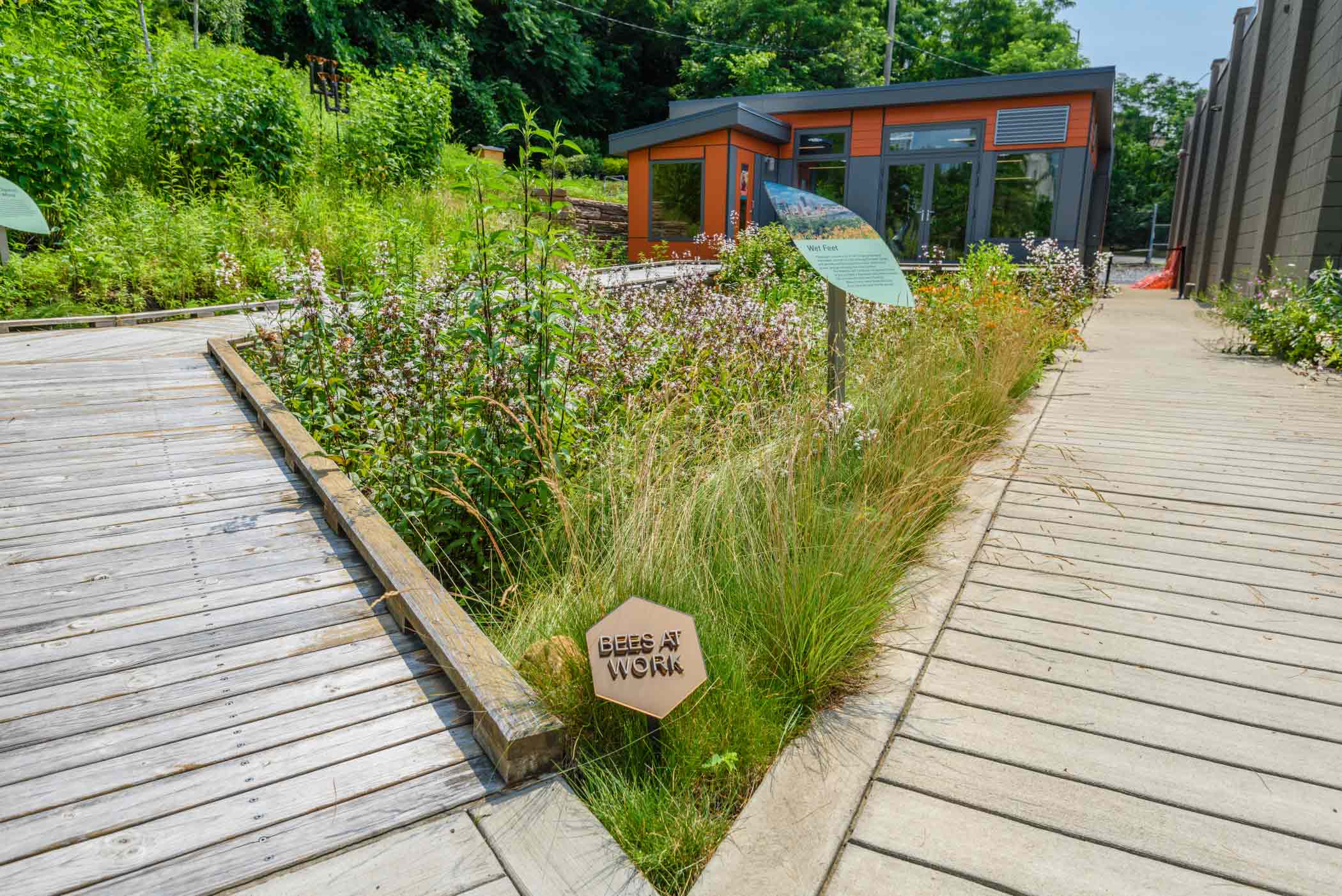
Select photos © Paul g. Wiegman; queen cell photo by Wikimedia User: Waugsberg CC BY-SA

